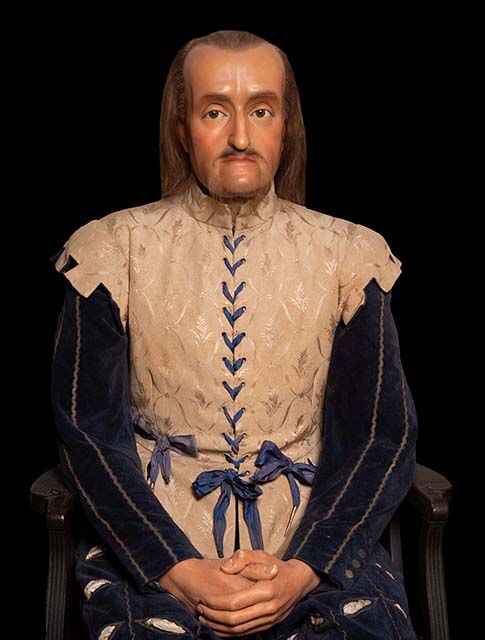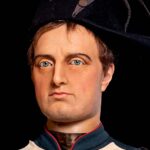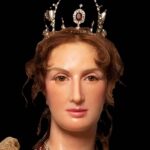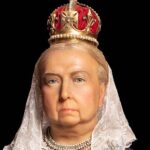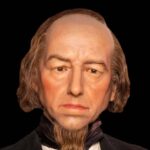First monarch to rule both England and Scotland
He is regarded as an important figure in British history for his contribution to the political and religious spheres of the two countries. Born in 1566, James VI and I claimed the Scottish throne after it was forfeited by his mother in 1567. He also inherited the English throne in 1603 as James I after the death of Queen Elizabeth I. He reigned upon the thrones of the two countries until his death in 1625. His reign marked the start of the Stuart dynasty in England and the union of the crowns of both England and Scotland. One of his lasting legacies was his sponsorship of the translation of the Bible into English in 1611 in what came to be known as the King James Version. King James’ life showcases his efforts to rule two countries and his long-lasting impact on British governance and religion.
Early Life
James VI and I was born on June 19, 1566, at Edinburgh Castle at a time when Scotland was facing political unrest. James was the only son of Mary, who was the Queen of Scots, and her husband Henry Stuart, who was the Lord of Darnley. His father passed when he was only eight months old due to an explosion in their family home. As the eldest son and heir apparent of the monarch, James automatically assumed prestigious titles such as the Duke of Rothesay and Prince and Great Steward of Scotland.
King James VI of Scotland and I of England succeeded to the Scottish throne in 1567 when he was just 13 months old. His ascension to power came as a result of his mother Mary being forced to renounce her throne as the Queen of Scots after facing immense pressure from rebellious Scottish nobles. Since James was still a child, four different regents were appointed to govern the country on his behalf. It was not until 1583 that James VI and I gained full control of his government. To prepare young James to take over power, he was given a good education. He studied Greek, French and Latin. His tutors, George Buchanan and Peter Young, helped him to obtain knowledge from classical and religious writings, which sparked his fascination with literary works.
LASTING LEGACY
One of his lasting legacies was his sponsorship of the translation of the Bible into English in 1611 in what came to be known as the King James Version.
In 1603, James took over the English throne following the death of Queen Elizabeth I, who was his cousin. James managed to inherit this throne because Elizabeth I died childless. Since Elizabeth I ruled over England and Ireland, James led Scotland, England, and Ireland. For the next 22 years, James VI and I reigned over the three kingdoms until his death in 1625, a period regarded as the Jacobean era in history. The guidance he received from regents and tutors prepared him well to take over the thrones of the three kingdoms.
Personal Life
At the age of 13, James formally entered Edinburgh. This marked the commencement of his public life as a monarch. This early exposure to royal governance and diplomacy impacted his later reign as the king of Scotland. Upon arriving in Edinburgh, James met his father’s first cousin, Esmé Stewart. They became extremely close to the extent that it was said James used to publicly display his affection to Stewart by openly kissing him. However, this relationship did not last since Stewart was banished to France due to Scottish nobles’ religious beliefs and motives. Sodomy was regarded as a serious crime during James’ reign. The Buggery Act of 1533 made anal sex an offense that was punishable by death, and this law remained in enforcement during King James VI of Scotland and I of England’s reign. James VI and I took a severe stance toward sodomy using English law, as stipulated in his writing “Basilikon Doron.” In this writing, James condemns homosexuality, calling it “abominable” and “against nature.” During his reign, those who were found to engage in homosexuality were punished to death by hanging. James VI and I’s view on sodomy was influenced by his religious beliefs and cultural norms, which scrutinized homosexuality as a deviant behavior that threatens the morality of society.
Additionally, King James was renowned for his intellectual abilities since he had an interest in theology, philosophy, and literature. He was tutored by scholars such as George Buchanan and was fluent in various languages, such as Greek, French and Latin. He also authored various writings related to politics and theology. James also displayed flamboyant generosity by spending funds on lavish court entertainments and feasts. He had a passion for hunting, as he spent a considerable amount of time hunting deer and other game in the Scottish Highlands. Through hunting, he engaged in recreation, asserting his authority over the lands and maintaining connections with other nobles.
King James VI of Scotland and I of England’s personal life was influenced by his religious and political stances. James’ ascension to power began in 1567 when he was crowned the king of Scotland as James VI. Later on, he became the king of England and Ireland in 1603 as James I. In Scotland, he had to deal with Protestant and Catholic tussles that ultimately led to the abdication of his mother. Taking over England and Ireland allowed him to bring everyone together, leading to the unionization of the crowns. This led to political and cultural exchange between the kingdoms. King James VI of Scotland and I of England ruled the kingdoms until his death in 1625.
DID YOU KNOW?
King James was renowned for his intellectual abilities since he had an interest in theology, philosophy, and literature.
Interesting Facts About James VI and I
Witch Trials
He had a hand in the Scottish witch trials. These trials saw numerous individuals persecuted and executed for involvement in witchcraft. James VI and I contributed to this through his writings such as “Daemonologie,” which explains the existence of witches. He also interrogated witchcraft suspects in the 1590 North Berwick witch trials.
King and Author
He was an author as well as a king. As an author, he sponsored the translation of the Bible into English, which was termed the King James Version. He also authored writings such as “Daemonologie,” which was published in 1597, and “Basilikon Doron,” which was written in 1599. He also wrote poems such as “His Majesties Poeticall Exercises at Vacant Houres.” As a king, James VI and I ruled England, Ireland, and Scotland.
The two kingdoms
In 1603, after inheriting the English throne, James VI and I tried to unite Scotland and England through unionization of the crowns. He brought the two kingdoms together under the kingship of one monarch despite the countries having separate parliaments, legal systems, and administrative structures. He tried to unite the two kingdoms through his declaration of speech to Parliament in 1604, when he claimed God made the two kingdoms as one island.
Assassination Attempt
He encountered various conspiracies during his reign. One of these conspiracies made him the target of the Gunpowder Plot, where the intention was to assassinate James by using explosives to blow up the House of Lords. This plot was led by English Catholics, such as Robert Catesby and Guy Fawkes, who wanted to overthrow the Protestant monarchy to restore Catholic rule. However, those involved were arrested and executed for treason.
First English Colony
It was under James’ reign that Jamestown was established, becoming the first successful English colony in North America. Jamestown was founded by the Virginia Company of London. Its name paid tribute to King James VI and I, who permitted the Virginia Company to establish colonies in North America.
Health Issues
King James VI of Scotland and I of England suffered from gout, arthritis, and kidney stones. He also probably developed a stroke in 1625, and on March 27 of the same year, he died due to complications from a combination of health issues.
Influence in History
James VI and I was known for his dual reign as the king of Scotland and England. He also became one of the youngest individuals to become king in Scotland since he technically took the throne when he was 13 months old. This was in 1567 when his mother was forced to abdicate. In 1603, James VI and I took over the English throne after the death of Elizabeth I, who was his cousin. Additionally, James VI and I is known for authorizing the translation of the Bible to English in 1611. This translation led to the King James Version of the Bible, which became the bestselling literature of the time.
Late in Life
On March 27, 1625, at the age of 58, King James VI of Scotland and I of England died following complications from health issues. His death occurred when he was at Theobalds, his beloved hunting lodge. Unlike his mother, who was executed, King James VI of Scotland and I of England died a natural death in his own bed. On May 5, 1625, James was buried and placed beneath the altar of Westminster Abbey. This was essential in commemorating his legacy as one of the leaders who tried to unite Scotland and England.
FAQs
How did James VI and I influence literature
King James I was an advocate for his native literature. He published a number of poetic works The English Renaissance drama and poetry reached a peak during King James’s reign. James was a key figure due to his active participation in and endorsement of literature, but his support of the Scottish custom, which included his ancestor James I of Scotland, was often overlooked.
What was James famous for in the Bible?
James VI and I is not mentioned in the Bible. However, he is famous for authorizing the translation of the Bible into English.
Was King James I a popular king?
Despite the challenges and controversies he faced, King James was well-liked among the population. This was because he was respected for his intellectual abilities and mission to unite Scotland and England.
Did King James VI and I write the King James Bible?
King James VI and I did not write the King James Bible, but he played a vital role in commissioning its translation into English.
